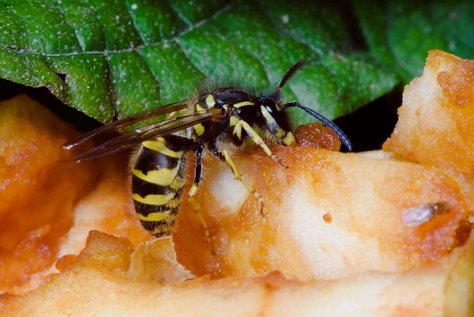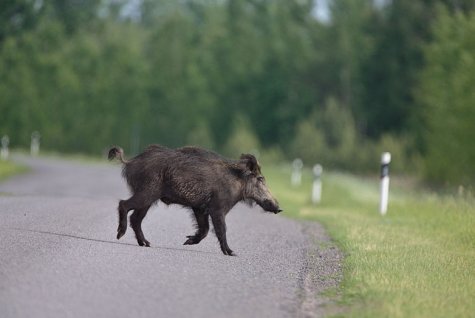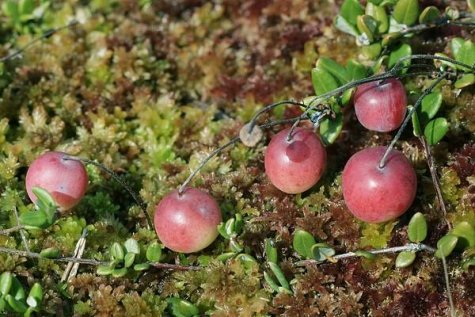Cranberry
Estonian original publ 24.08.2014
Text Kristel Vilbaste
Photos Arne Ader
Translation Liis
Wasp
The buzz above our heads is continuous and loud. Wasps! They press into rooms and cars. Courtyards and gardens are full of them. Some of them have bored into a just- ripened apple and now, full to bursting, cannot move.
With the wasps we will have to live for a good month yet. Only when the weather-wise predict the first severer night frosts they disappear from our life. So, the earlier the frosts come this year, the better.
But a little sad too about these buzzers. Nobody simply needs them any more. They have been working industriously throughout all summer and now they have been thrown out of the nest. Instead of carrying protein-rich insects to the nest, they simply have to survive themselves. And they do survive, on all that is good and sweet.
Their relations with people are not happy. Although most likely we will only get stung a few times during the autumn we just will not accept that.Well, compared to mosquitoes they are minor plagues, many times over.
The wasps’ brethren, the bees, have finished their summer work too, and although a poor honey year was predicted this year, the mid-summer heat has brought plenty of honey into the hives. It is like molten gold this year and full of the smell of thousands of flowers. It is just not possible to have enough of honey from the honeycomb.
Wolves are once again slaying sheep, this year their teeth are particularly sharp. The Estonian government should revise its wolf policy, it seems, because sheep are no longer being slain by this years cubs who are learning to hunt but by old lone wolves.
In many places it is no longer any point in having sheep, and when there are no more sheep the wolves will attack calves and foals. When hungry they will start harassing humans too. Litters in natural landscapes should be preserved, that is, when there are sufficient prey animals in the woods. Now solitary sheep slayers tend to dominate, and in the old times people knew that who had got the taste of sheep meat in the mouth would never go back to be a forest creature – they were hunted down in summer too behind the sheep pen. Animals must not be changed to depend on humans.
Boar on road
But boar hunting should certainly be prohibited now, in order not to set the boars moving, and so spreading swine pest. On the Taasiseseisvumispäeval however I heard gunshots precisely at the boar feeding ground.
Autumn arrives in the plant realm by leaps and bounds. Birch leaves are already yellow, rowans bent down by reddening berries. And although except for rowans we have other berries scantily this year, at least it seems to become a good cranberry year.
Lingonberries can already be picked if in dire need, they still have one cheek as white as god made it, locally even green, but for cranberries it is definitely too early.
Cranberry
Berries are ripe when the seeds in them are ripe. As with apples with white seeds that won’t have the right taste, so a raw cranberry has not the proper acidity, and if picked for winter storage, they tend to rot. Moreover berries picked in August are smaller by 1/3 than when picked at the right time.
So when is the right time to go to the cranberry bog? It is the second weekend of September. By this time my new book, “Jõhvikas (Cranberry)” will have reached the counters. In it, helped by many friends and my cranberry-raising mother, I have given a 250-page overview of our own native cranberry.
“Eat yourself healthy!” is the most important message that people of old have to share with us. Eating cranberries ensures a long life. Just three cranberries a day helps to have a nearly hundred-year life.
In the book you will find guidelines on how to prepare remedies from cranberries and truly health-boosting recipes for everyone’s table. You can even read about what is hidden in the ”heart” of the cranberry and what the scientists say about it.
The story of nearly half a century of Estonian cranberry studies and cultivation is also documented. You will learn what real beauties the berries of the cultivars of the common cranberry are. You will find precise instructions on how to create a cranberry bed of a few square meters in your home garden, from which the yield will be enough for one family’s winter need.
And of course knowledge is shared on where to find the cranberries in a bog, and how to pick, clean and store them most effectively. Stories are told too of how in the heyday of cranberry picking people went to pick them by flashlight in early mornings, because in those times the miraculous powers of cranberries were really trusted. And people were healthy!











